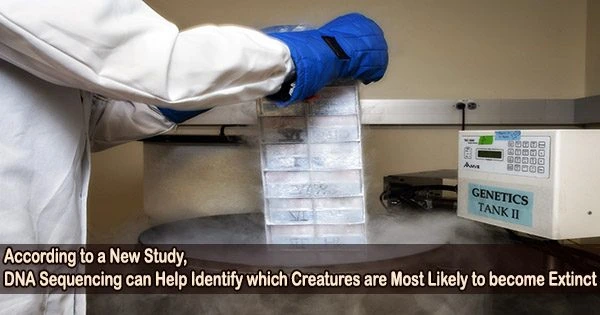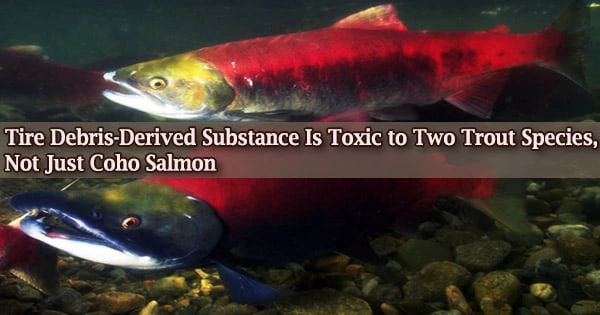A group of scientists led by the San Diego Zoo Wildlife Alliance and the University of California, Santa Cruz determined that genomic information about animals can help forecast which mammal species are more likely to become extinct.
They discovered that species with lower historical populations have larger loads of harmful mutations and are more vulnerable to extinction, implying that long-term demographic statistics are relevant to today’s conservation status and resiliency.
The findings, which potentially transform how conservation measures and resources are strategically applied to help rescue endangered wildlife, are part of a series of publications released this spring in a special issue of the journal Science by the Zoonomia Consortium.
The earth is witnessing tremendous biodiversity loss, with tens of thousands of species on the verge of extinction, and identifying those in greatest need is a time-consuming and costly procedure. However, little is known about thousands of species, making it difficult to dedicate limited conservation resources to those closest to extinction.
To assist overcome these constraints, the researchers studied 240 mammal species ranging from small tree shrews to towering giraffes, killer whales, and even humans. They discovered that DNA encoded within a single genome reflecting the species’ history over millions of years can provide a rapid, cost-effective conservation risk assessment, even when we don’t know much about the animals’ physiological, behavioral, and life history characteristics, or even how many individuals remain.
Many potentially endangered species are classified as ‘data deficient,’ meaning that we simply have too little information to determine whether immediate conservation action is required. Our results show that a genome from a single individual can be sufficient to identify the most threatened of these ‘data deficient’ species, enabling us to focus our limited resources where they can be most impactful.
Professor Beth Shapiro
“These results show that genetic information, even if only from a single individual for a given species, offers immediate, actionable guidance for scientists designing conservation strategies as well as those with boots in the field,” said Aryn P. Wilder, Ph.D., a conservation scientist at San Diego Zoo Wildlife Alliance and one of the paper’s two lead authors.
“The limited resources available for the conservation of wildlife species requires triage,” said Megan Supple, a research scientist with the UCSC Paleogenomics Lab and co-lead of the project. “Our genomic assessment provides a relatively inexpensive method to rapidly identify species at risk of becoming endangered in the future, even when little else is known about that species. This genomic triage enables managers to target limited resources toward species most in need.”
Based on demography, diversity, and mutations that affect fitness, the genomic research was utilized to train algorithms that swiftly identify between threatened and non-threatened species. This will aid in assessing extinction risk, determining which of the thousands of threatened species will benefit the most from conservation assistance, especially as the number of sequenced genomes increases, and the models improve.
The Upper Galilee Mountains blind mole rat, smaller chevrotain, and orca are three instances of the thousands of species that lack information on whether they are vulnerable. The researchers used their models on these “data-deficient” species to show how a genetic risk assessment may operate.
The overall number of species included in the study, which is the largest of its type, is what makes the research groundbreaking. Scientists were able to quantify the genomic traits that best predict extinction risk and construct genomic risk assessment models that can be utilized when other information is missing by evaluating 240 species.
This prompted the authors of the research to advocate for the inclusion of genomic information in species conservation status assessments in order to bridge the gap between geneticists and conservation managers and give a framework for allocating funds and resources to the most vulnerable species.
“Many potentially endangered species are classified as ‘data deficient,’ meaning that we simply have too little information to determine whether immediate conservation action is required,” said Beth Shapiro, Ph.D., Professor of Ecology and Evolutionary Biology at UC Santa Cruz and an HHMI Investigator.
“Our results show that a genome from a single individual can be sufficient to identify the most threatened of these ‘data deficient’ species, enabling us to focus our limited resources where they can be most impactful.”
“Our rapidly changing world threatens animal and plant species worldwide but the use of genomics in conservation is a massive, underappreciated opportunity to protect them,” said Oliver Ryder, Ph.D., the Kleberg Endowed Director of Conservation Genetics at San Diego Zoo Wildlife Alliance and co-senior author of the paper.
“We are in an unprecedented era of discovery a whole new way of seeing the world. We’ve long thought this potential existed, but it’s profound to see it crystallize into a catalyst that will help conservationists make crucial decisions that may save the world as we know it.”
The genomics manuscript is part of the Zoonomia Consortium’s study, which involves more than 150 researchers worldwide and is the world’s largest comparative mammalian genomics database.
The studies in the Science series also show how comparative genomics can throw light on how certain species achieve amazing feats and help scientists better understand the functional sections of our genome and how they may influence health and illness. They also discovered a genetic basis for unique mammal features like the ability to detect faint scents from long distances.
The San Diego Zoo Wildlife Alliance’s “Frozen Zoo” provided many of the genetic samples, including those of threatened and endangered species, for the DNA analyses performed at more than 50 institutions worldwide as part of the Zoonomia Consortium.
The Wildlife Biodiversity Bank, often known as the Frozen Zoo, is the world’s biggest store of genetic material of its kind, holding viable cell cultures and reproductive material from over 10,000 animals representing over 1,100 species and subspecies.
















